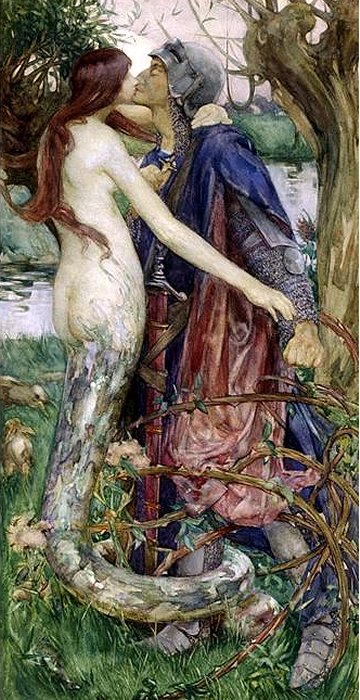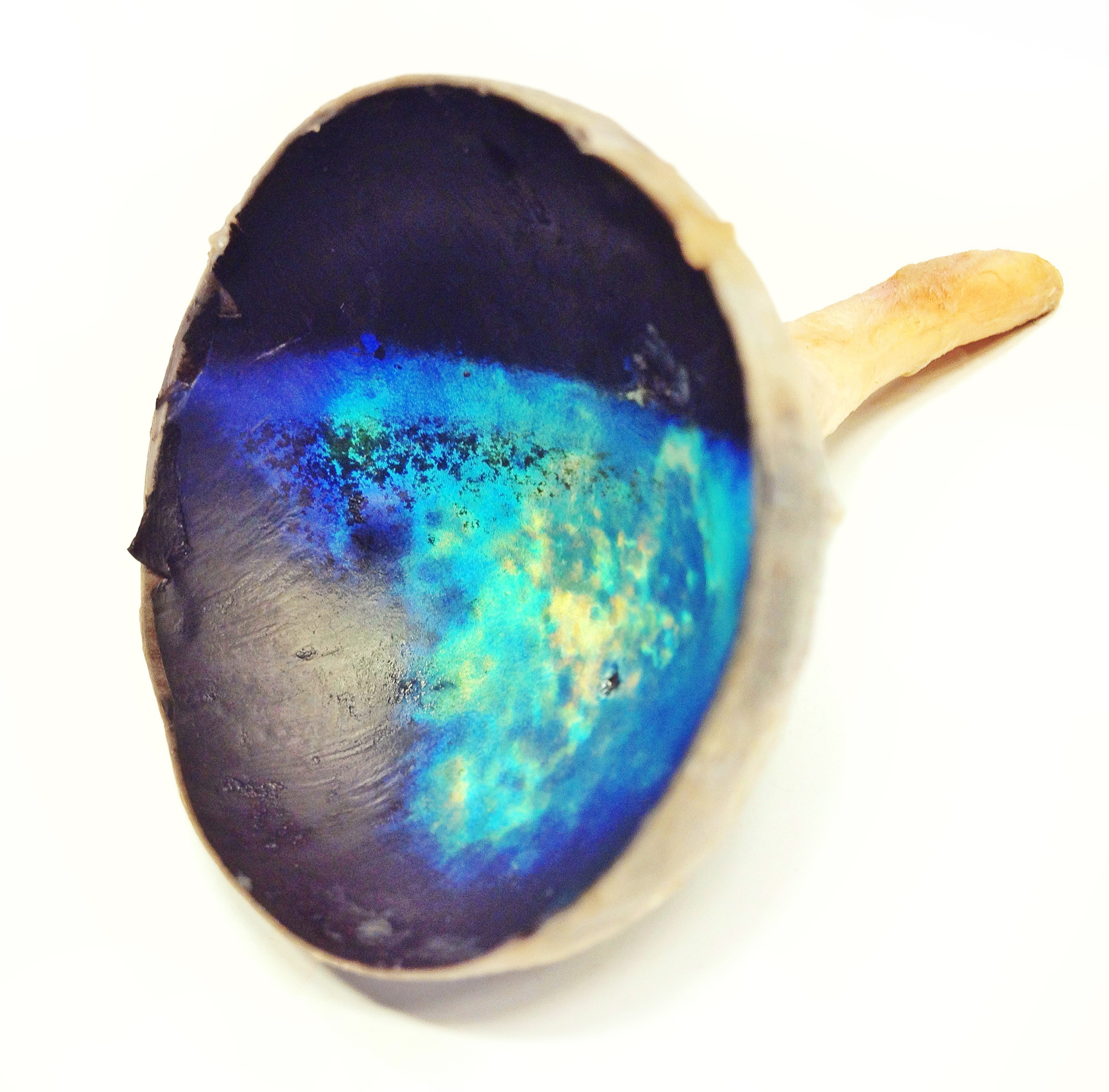|
Lemures
The were shades or spirits of the restless or malignant dead in Roman religion, sometimes used interchangeably with the term (from Latin , 'mask'). The term was first used by the Augustan poet Horace (in Epistles 2.2.209), and was the more common literary term during the Augustan era, with being used only once by Horace. However, is also uncommon: Ovid being the other main figure to employ it, in his ''Fasti'', the six-book calendar poem on Roman holidays and religious customs. Later the two terms were used nearly or completely interchangeably, e.g. by St. Augustine in ''De Civitate Dei''. The word can be traced to the Proto-Indo-European stem *', which also appears in the name of the Greek monster Lamia. Description ' may represent the wandering and vengeful spirits of those not afforded proper burial, funeral rites or affectionate cult by the living: they are thus not attested by tomb or votive inscriptions. Ovid interprets them as vagrant, unsatiated and potenti ... [...More Info...] [...Related Items...] OR: [Wikipedia] [Google] [Baidu] |
Lemuria (festival)
The Lemuralia or Lemuria was an annual event in the religion of ancient Rome, during which the Romans performed rites to exorcise any malevolent and fearful ghosts of the restless dead from their homes. These unwholesome spectres, the ''lemures'' or ''larvae'' were propitiated with chants and offerings of black beans. Observance In the Julian calendar the three days of the festival were 9, 11, and 13 May. Lemuria's name and origin myth, according to Ovid, derives from a supposed ''Remuria'' instituted by Romulus to appease the angry spirit of his murdered twin, Remus. The philosopher Porphyry points out that Remus' death was violent, premature, and a matter of regret for Romulus. Toynbee defines ''lemures'' as ordinary ''di Manes'', made harmful and spiteful to the living because "kinless and neglected" in death and after it, having no rites or memorial, free to leave their dead body but unable to enter the underworld or afterlife. A less common but more "mischievo ... [...More Info...] [...Related Items...] OR: [Wikipedia] [Google] [Baidu] |
Lemur
Lemurs ( ; from Latin ) are Strepsirrhini, wet-nosed primates of the Superfamily (biology), superfamily Lemuroidea ( ), divided into 8 Family (biology), families and consisting of 15 genera and around 100 existing species. They are Endemism, endemic to the island of Madagascar. Most existing lemurs are small, have a pointed snout, large eyes, and a long tail. They arboreal, chiefly live in trees and nocturnal, are active at night. Lemurs share resemblance with other primates, but evolved independently from monkeys and apes. Due to Madagascar's highly seasonal climate, Evolution of lemurs, lemur evolution has produced a level of species diversity rivaling that of any other primate group. Living lemurs range in weight from the mouse lemur to the indri. Since the arrival of humans on the island around 2,000 years ago, over a dozen species of "giant lemurs" larger than living lemur species have become extinct, including the gorilla-sized ''Archaeoindris''. Lemurs share ma ... [...More Info...] [...Related Items...] OR: [Wikipedia] [Google] [Baidu] |
Lamia
Lamia (; ), in ancient Greek mythology, was a child-eating monster and, in later tradition, was regarded as a type of night-haunting spirit or "daimon". In the earliest myths, Lamia was a beautiful queen of ancient Libya who had an affair with Zeus and gave birth to his children. Upon learning of this, Zeus's wife Hera robbed Lamia of her children, either by kidnapping them and hiding them away, killing them outright, or forcing Lamia to kill them. The loss of her children drove Lamia insane, and she began hunting and devouring others' children. Either because of her anguish or her cannibalism, Lamia was transformed into a horrific creature. Zeus gifted Lamia the power of prophecy and the ability to take out and reinsert her eyes, possibly because Hera cursed her with insomnia or the inability to close her eyes. The ''lamiai'' () also became a type of phantom, synonymous with the empusai who seduced young men to satisfy their sexual appetite and fed on their flesh afterward. An ... [...More Info...] [...Related Items...] OR: [Wikipedia] [Google] [Baidu] |
Religion In Ancient Rome
Religion in ancient Rome consisted of varying imperial and provincial religious practices, which were followed both by the Roman people, people of Rome as well as those who were brought under its rule. The Romans thought of themselves as highly religious, and attributed their success as a world power to their collective piety () in maintaining Pax deorum, good relations with the gods. Their Polytheism, polytheistic religion is known for having honoured List of Roman deities, many deities. The presence of Magna Graecia, Greeks on the Italian peninsula from the beginning of the historical period influenced Culture of ancient Rome, Roman culture, introducing some religious practices that became fundamental, such as the of Apollo. The Romans looked for common ground between their major gods and those of the Greeks (), adapting Greek mythology, Greek myths and iconography for Latin literature and Roman art, as the Etruscans had. Etruscan religion was also a major influence, partic ... [...More Info...] [...Related Items...] OR: [Wikipedia] [Google] [Baidu] |
Roman Empire
The Roman Empire ruled the Mediterranean and much of Europe, Western Asia and North Africa. The Roman people, Romans conquered most of this during the Roman Republic, Republic, and it was ruled by emperors following Octavian's assumption of effective sole rule in 27 BC. The Western Roman Empire, western empire collapsed in 476 AD, but the Byzantine Empire, eastern empire lasted until the fall of Constantinople in 1453. By 100 BC, the city of Rome had expanded its rule from the Italian peninsula to most of the Mediterranean Sea, Mediterranean and beyond. However, it was severely destabilised by List of Roman civil wars and revolts, civil wars and political conflicts, which culminated in the Wars of Augustus, victory of Octavian over Mark Antony and Cleopatra at the Battle of Actium in 31 BC, and the subsequent conquest of the Ptolemaic Kingdom in Egypt. In 27 BC, the Roman Senate granted Octavian overarching military power () and the new title of ''Augustus (title), Augustus'' ... [...More Info...] [...Related Items...] OR: [Wikipedia] [Google] [Baidu] |
James I Of England
James VI and I (James Charles Stuart; 19 June 1566 – 27 March 1625) was King of Scotland as James VI from 24 July 1567 and King of England and Ireland as James I from the union of the Scottish and English crowns on 24 March 1603 until his death in 1625. Although he long tried to get both countries to adopt a closer political union, the kingdoms of Scotland and England remained sovereign states, with their own parliaments, judiciaries, and laws, ruled by James in personal union. James was the son of Mary, Queen of Scots, and a great-great-grandson of Henry VII, King of England and Lord of Ireland, and thus a potential successor to all three thrones. He acceded to the Scottish throne at the age of thirteen months, after his mother was forced to abdicate in his favour. Although his mother was a Catholic, James was brought up as a Protestant. Four regents governed during his minority, which ended officially in 1578, though he did not gain full control of his governmen ... [...More Info...] [...Related Items...] OR: [Wikipedia] [Google] [Baidu] |
Mephistopheles
Mephistopheles ( , ), also known as Mephostophilis or Mephisto, is a demon featured in German folklore, originating as the chief devil in the Faust legend. He has since become a stock character appearing in Mephistopheles in the arts and popular culture, other works of arts and popular culture. Mephistopheles never became an integral part of traditional magic. He is also referred to as the Shadow of Lucifer and Prince of Trickery. During the medieval and Renaissance times, Mephistopheles is equated with the devil due to his high position in the hellish hierarchy. He is one of the seven great princes of Hell, along with being one of the first four angels who rebelled against God and fell. In the popular fiction of Tenida, mephistophilis is used as a humourous and satirical dialogue. Origins Around the fifteenth to seventeenth centuries in Europe, the age of witchcraft waned, and the Devil became more of a fixture in literature until the later eighteenth century. Once the idea of ... [...More Info...] [...Related Items...] OR: [Wikipedia] [Google] [Baidu] |
Goethe's Faust
''Faust'' ( , ) is a tragedy, tragic Play (theatre), play in two parts by Johann Wolfgang von Goethe, usually known in English as ''Faust, Part One'' and ''Faust, Part Two''. Nearly all of Part One and the majority of Part Two are written in rhymed verse. Although rarely staged in its entirety, it is the play with the largest audience numbers on German-language stages. ''Faust'' is considered by many to be Goethe's ''Masterpiece, magnum opus'' and the greatest work of German literature. The earliest forms of the work, known as the ', were developed between 1772 and 1775; however, the details of that development are not entirely clear. ''Urfaust'' has twenty-two scenes, one in prose, two largely prose and the remaining 1,441 lines in rhymed verse. The manuscript is lost, but a copy was discovered in 1886. The first appearance of the work in print was ''Faust, a Fragment'', published in 1790. Goethe completed a preliminary version of what is now known as ''Part One'' in 1806. Its ... [...More Info...] [...Related Items...] OR: [Wikipedia] [Google] [Baidu] |
Goethe
Johann Wolfgang (von) Goethe (28 August 1749 – 22 March 1832) was a German polymath who is widely regarded as the most influential writer in the German language. His work has had a wide-ranging influence on Western literature, literary, Political philosophy#European Enlightenment, political, and Western philosophy, philosophical thought in the Western world from the late 18th century to the present.. A poet, playwright, novelist, scientist, statesman, theatre-director, and critic, Johann Wolfgang von Goethe bibliography, his works include plays, poetry and aesthetic criticism, as well as treatises on botany, anatomy, and colour. Goethe took up residence in Weimar in 1775 following the success of his first novel, ''The Sorrows of Young Werther'' (1774), and joined a thriving intellectual and cultural environment under the patronage of Duchess Anna Amalia of Brunswick-Wolfenbüttel, Duchess Anna Amalia that formed the basis of Weimar Classicism. He was ennobled by Karl August, G ... [...More Info...] [...Related Items...] OR: [Wikipedia] [Google] [Baidu] |
Tapetum Lucidum
The ; ; : tapeta lucida) is a layer of tissue in the eye of many vertebrates and some other animals. Lying immediately behind the retina, it is a retroreflector. It Reflection (physics), reflects visible light back through the retina, increasing the light available to the Photoreceptor cell, photoreceptors (although slightly blurring the image). The tapetum lucidum contributes to the superior night vision of some animals. Many of these animals are nocturnality, nocturnal, especially carnivores, while others are Deep-sea community, deep-sea animals. Similar adaptations occur in some species of spiders. Haplorhini, Haplorhine primates, including humans, are Diurnality, diurnal and lack a tapetum lucidum. Function and mechanism The presence of a tapetum lucidum enables animals to see in dimmer light than would otherwise be possible. The tapetum lucidum, which is iridescent, reflects light roughly on the Interference (wave propagation), interference principles of thin-film opti ... [...More Info...] [...Related Items...] OR: [Wikipedia] [Google] [Baidu] |
Virgil
Publius Vergilius Maro (; 15 October 70 BC21 September 19 BC), usually called Virgil or Vergil ( ) in English, was an ancient Rome, ancient Roman poet of the Augustan literature (ancient Rome), Augustan period. He composed three of the most famous poems in Latin literature: the ''Eclogues'' (or ''Bucolics''), the ''Georgics'', and the Epic poetry, epic ''Aeneid''. A number of minor poems, collected in the ''Appendix Vergiliana'', were attributed to him in ancient times, but modern scholars generally regard these works as spurious, with the possible exception of a few short pieces. Already acclaimed in his own lifetime as a classic author, Virgil rapidly replaced Ennius and other earlier authors as a standard school text, and stood as the most popular Latin poet through late antiquity, the Middle Ages, and early modernity, exerting inestimable influence on all subsequent Western literature. Geoffrey Chaucer assigned Virgil a uniquely prominent position among all the celebrities ... [...More Info...] [...Related Items...] OR: [Wikipedia] [Google] [Baidu] |
Carl Linnaeus
Carl Linnaeus (23 May 1707 – 10 January 1778), also known after ennoblement in 1761 as Carl von Linné,#Blunt, Blunt (2004), p. 171. was a Swedish biologist and physician who formalised binomial nomenclature, the modern system of naming organisms. He is known as the "father of modern Taxonomy (biology), taxonomy". Many of his writings were in Latin; his name is rendered in Latin as and, after his 1761 ennoblement, as . Linnaeus was the son of a curate and was born in Råshult, in the countryside of Småland, southern Sweden. He received most of his higher education at Uppsala University and began giving lectures in botany there in 1730. He lived abroad between 1735 and 1738, where he studied and also published the first edition of his ' in the Netherlands. He then returned to Sweden where he became professor of medicine and botany at Uppsala. In the 1740s, he was sent on several journeys through Sweden to find and classify plants and animals. In the 1750s and 1760s, he co ... [...More Info...] [...Related Items...] OR: [Wikipedia] [Google] [Baidu] |









